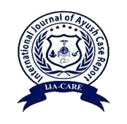Management of Epistaxis through Homoeopathic Simillimum ‘Cactus Grandiflorus’- A Case Report
Abstract
Concomitant symptoms, as termed in homoeopathy, are those symptoms that have no relation to the leading symptoms or the pathology of the case but they are present in the patient. These symptoms seem to be of tremendous value for homoeopathic prescription and plays a pivotal role in homoeopathic practice. However, these symptoms are often neglected while case taking. There is a paucity of evidence generated in this field and this most important aspect of concomitant symptom, as described by stalwarts of Homoeopathy, remains untouched. The case report presented an acute episode of a chronic complaint of nosebleed with an accompanying symptom of constriction in the head. This was considered as the concomitant symptom and was given the supreme importance while making the prescription. Cactus Grandiflorus was found to be the single remedy indicating this symptom in synthesis repertory using Radar opus software. Cactus Grandiflorus was prescribed in 1000 C potency, 2 doses on the baseline visit, single dose consisted of four globules of size forty. The patient was completely relieved of the main complaint along with other associated complaints and no relapse was reported within six months. This case report is an attempt to bring into light the importance of concomitant symptoms to make successful homoeopathic prescriptions.

This work is licensed under a Creative Commons Attribution-NonCommercial-NoDerivatives 4.0 International License.

